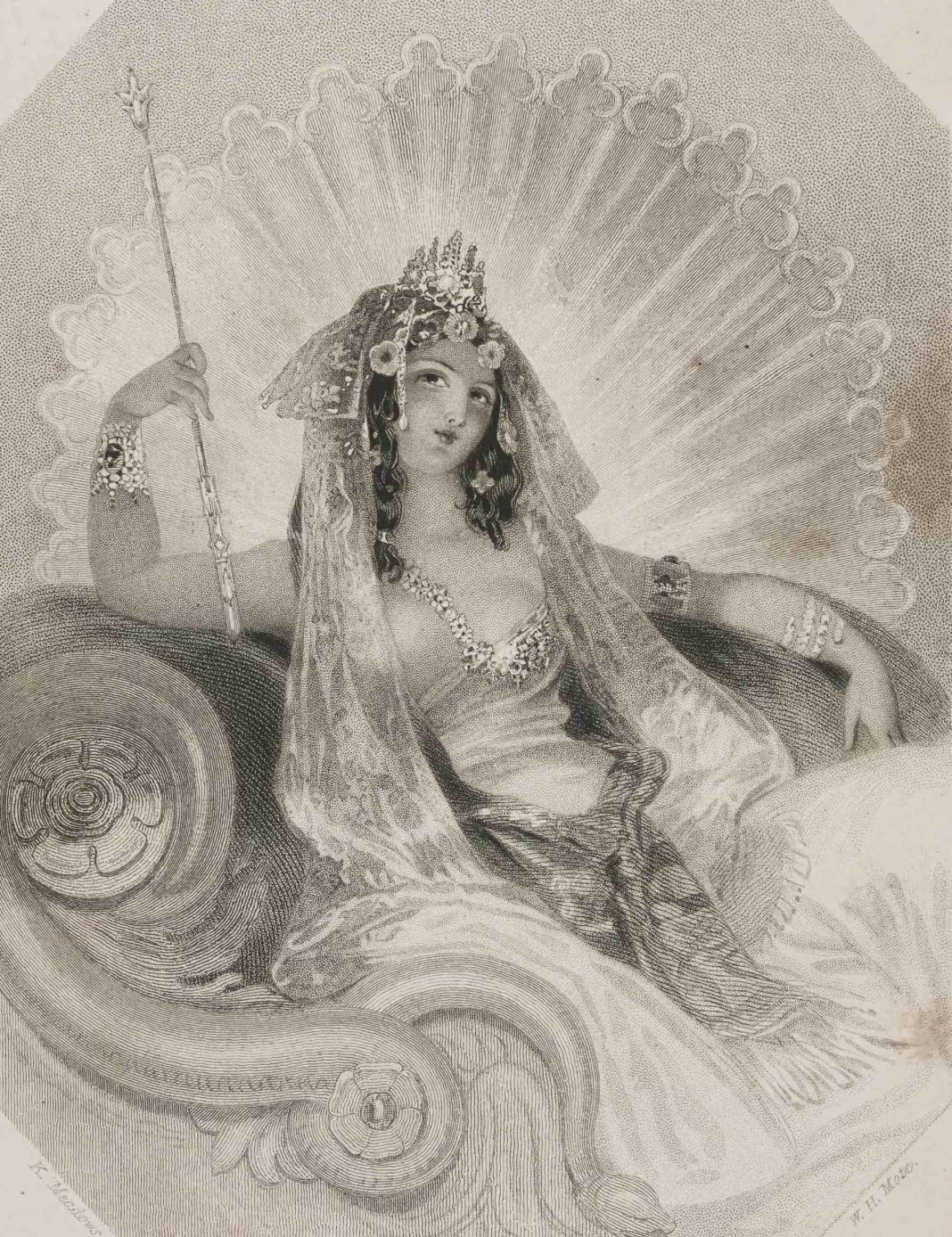By Sara Cleto and Brittany Warman
“She was tall; —a queen might wear Such a proud imperial air;
She was tall, yet when unbound, Swept her bright hair to the ground,
Glittering like the gold you see
On a young laburnum tree.
Yet her eyes were dark as night, Melancholy as moonlight,
With the fierce and wilder ray
Of a meteor on its ray.”
From “The Fairy of the Fountains” by Letitia Elizabeth Landon
When most people think about the great Romantic poets, six names come to mind—William Blake, William Wordsworth, Samuel Taylor Coleridge, Percy Bysshe Shelley, Lord Byron, and John Keats. They are the big six, the canon, the names you’re most likely to find if you pick up a book entitled The Romantics. They’re also all men. What you’re less likely to find is the work of a brilliant woman named Letitia Elizabeth Landon. She was prolific, celebrated, even iconic—and she and her dazzling poetry have been all but erased from history.
Landon, who went by the pen name L.E.L., is commonly referred to as the Female Byron. Why? Because her work was wildly popular in her time—some say she was even more popular than Byron himself! Landon was a celebrity: mysterious, beautiful, witty, and clever. In their introduction to her Selected Writings, Jerome McGann and Daniel Riess go so far as to describe her as “a legendary figure of 19th century British culture,” and it’s hard to argue with them. She inspired love, hatred, jealousy, and even conspiracy theories.
Born in Knightsbridge, England, in 1802, Landon began publishing her poems when she was still a teenager. Her poetry was unapologetically feminine, full of flowers, birds, fairies, and distinctly female voices. She was also a savvy creator. Because her family largely depended on her poetry sales to survive, she was keenly attuned to what would sell, often putting more complex work aside in favor of the kind of sweet, simple poetry meant for annuals and gift books. Ironically the fact that she was smart enough to play to her market contributed to the dismissal of the poet and her work as “sentimental” and “unsophisticated” for more than a century.
More recently, however, scholars and poets have started to remember—and admire—L.E.L. Even the poems long criticized for their overtly feminine qualities have started to garner more interest. Some contemporary scholars now argue that her poetry frequently reveals a proto-feminist outlook that enriches our vision of the Romantics and the 19th century. Because Landon was particularly fascinated by magic and romance, her work also includes some of the earliest reworkings of traditional stories. And she often tells them through the eyes of silenced, forgotten, or maligned female figures. For example, Landon’s poem “The Fairy of the Fountains” (1835), first penned for a lighthearted Christmas gift book, has captured folklorists’ attention.
“The Fairy of the Fountains” is a reimagining of the story of the fairy Melusine, a tale you might already know, from her own perspective. The story exists in a few different variations, but it usually goes that a fairy falls in love with a human knight. She says she’ll marry him only on the condition that she must always be alone on the seventh day of the week. Of course, the knight grows curious, and then suspicious. When he breaks the taboo and spies on his wife, he learns that she has the lower body of a snake. Sometimes Melusine is furious at his betrayal and disappears, cursing him. Sometimes it is revealed that she herself is under a curse and must leave him now that he knows her secret, even though she wants to stay.
Though many Romantic poets take up the character of the femme fatale supernatural woman—think Keats’s “La Belle Dame Sans Merci” or Coleridge’s “Christabel”—Landon’s treatment of the subject is far more sympathetic than any of the others. While Keats’s “faery’s child” seduces a knight to his doom and Coleridge’s Geraldine plots the downfall of a kingdom, Landon’s vision of Melusine transforms her from a stereotypical monster to the heroine of the story. Though Melusine’s body is monstrous, the fairy woman is revealed in Landon’s poem to be a complex, powerful, and fully realized woman with an amazing depth of emotions. Landon encourages her readers to feel pity for Melusine and even solidarity with her—not fear. In the period she was writing, this was an unconventional and enormously brave choice.
Landon died in Africa in 1838, only thirty-six years old, under mysterious circumstances that only added to her legend in her own time. Though she spent many years in relative obscurity, times are changing, and her star is rising. Soon, we hope L.E.L. and her poetry will claim their rightful place among the great Romantics.
Sara Cleto and Brittany Warman are folklorists, authors, and teachers, as well as co-founders of The Carterhaugh School of Folklore and the Fantastic, which you can read more about at carterhaughschool.com.

































